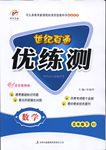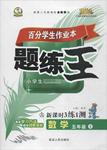题目内容
With everything _______, we started our recording to celebrate the times we spent.
A. considering B. to consider
C. considered D. to be considered
C
【解析】
试题分析:考查非谓语动词。句意:考虑了所有因素之后,我们开始录影来庆祝我们一起度过的时光。with+名词/代词+doing/to do/done/形容词等构成复合结构,everything与consider是动宾关系,即因素被考虑,故用过去分词作宾补,故选C。
考点:考查非谓语动词

练习册系列答案
 世纪百通主体课堂小学课时同步达标系列答案
世纪百通主体课堂小学课时同步达标系列答案 世纪百通优练测系列答案
世纪百通优练测系列答案 百分学生作业本题练王系列答案
百分学生作业本题练王系列答案
相关题目



